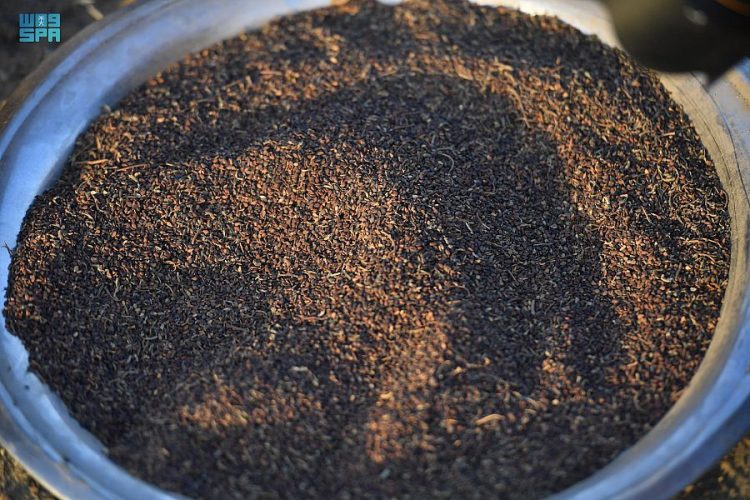Publisher: Maaal International Media Company
License: 465734
Kicked off in the Southwestern Jazan Region
Jaljalan Sesame Winter-time Harvest Season, in full Gear
Farmers in the Jazan region, produce as much as 6,422,000 kilograms of sesame or the (Jaljalan), annually, as per average.
Sesame is a very essential oil seed crop, famous for being among the main cultivations, in the region.
The number of agricultural holdings of sesame, currently, stood at 6,422 hectares.
اقرأ المزيد
The sesame plant is cultivated by the seeding by conventional means of plow, in a traditional manner so as not to affect its growth, until the season is complete.
The length of the sesame plant is approximately one meter.
They are plants with green-purple leaves that are oval, in shape, and each branch of the plant carries a flower of pinkish-white bell, in the shape, while its fruits are dispersed on the tree branch, in the form of capsules filled with small green sesame seeds, that gradually turn brown or white, at the time of harvest.
Following their growth is completed within 90-120 day, after the yellowing of the stems, lower leaves, and the fall of the flowers, then Sesame shall, generally, be harvested and stored for 3-day until it dries, and then it is assembled in a pyramid shape, or what is called as the Mizzuam, to wait for 20-day.
The following step, is the filtration or refining stage, considered the most difficult, to ensure that the Sesame is well dried, so that the process of thrashing begins after the Noon prayer, to benefit from the sun’s rays.
Then the harvested Sesame is packed in bags, tightly closed for sale, in the local markets.
Value of a bag weighing 50 kilograms, usually, ranges from SR400 to SR600, depending on the supply and demand varying dynamics.
On the other hand, the Sesame oil is extracted by squeezing Sesame seeds, through traditional mills that have proven their efficiency, through hundreds of years.
After placing the Sesame seeds in the mill, appropriate amounts of water are added to the seeds, to be continuously moved inside the mill by means of a “Pole” in the middle, in a circular motion led by a camel, rotating to keep working for long hours a day, in a continuous circular movement, with blindfolded eyes, so that it does not get dizzy.
The process of pressing the Sesame takes more than 4 hours, after which the owner of the press obtains the so called “Saleet” Sesame oil, ready for sale at prices that vary according to the prices of sesame seeds and their availability, in the markets, where the price per liter, often, ranges from SR20 to SR30.
Research indicates that Sesame oil contains a high percentage of acids, essential substance needed by the body for the construction and building of the outer membranes of cells and the construction of phosphorous lipids, serving as a backbone in the cell membranes and food myelin, in nerves and neurons.
The people of Jazan have known since a very long time, the benefits of Sesame seeds, as the blackish type is the best among them, and they used it to treat the liver and kidneys, dizziness or vertigo, breast milk diuresis, treatment of many skin diseases, constipation, treatment of darkness or lack of clarity in vision, improving listening and giving gray color to generation of newly sprouted hair, especially for the newborns, and treatment of hair that is lost after diseases, dermatitis, wounds and skin ulcers..
People use Sesame oil, of course, in cooking for several dishes, including fish frying, as they are keen to use it to add a distinctive flavor to the taste of fried fish with Sesame oil.
Saleet is added to the fenugreek, yogurt, and several types of pastes and salads for its nutritional benefit, as well as to add furthermore wonderful and flavorful taste.









